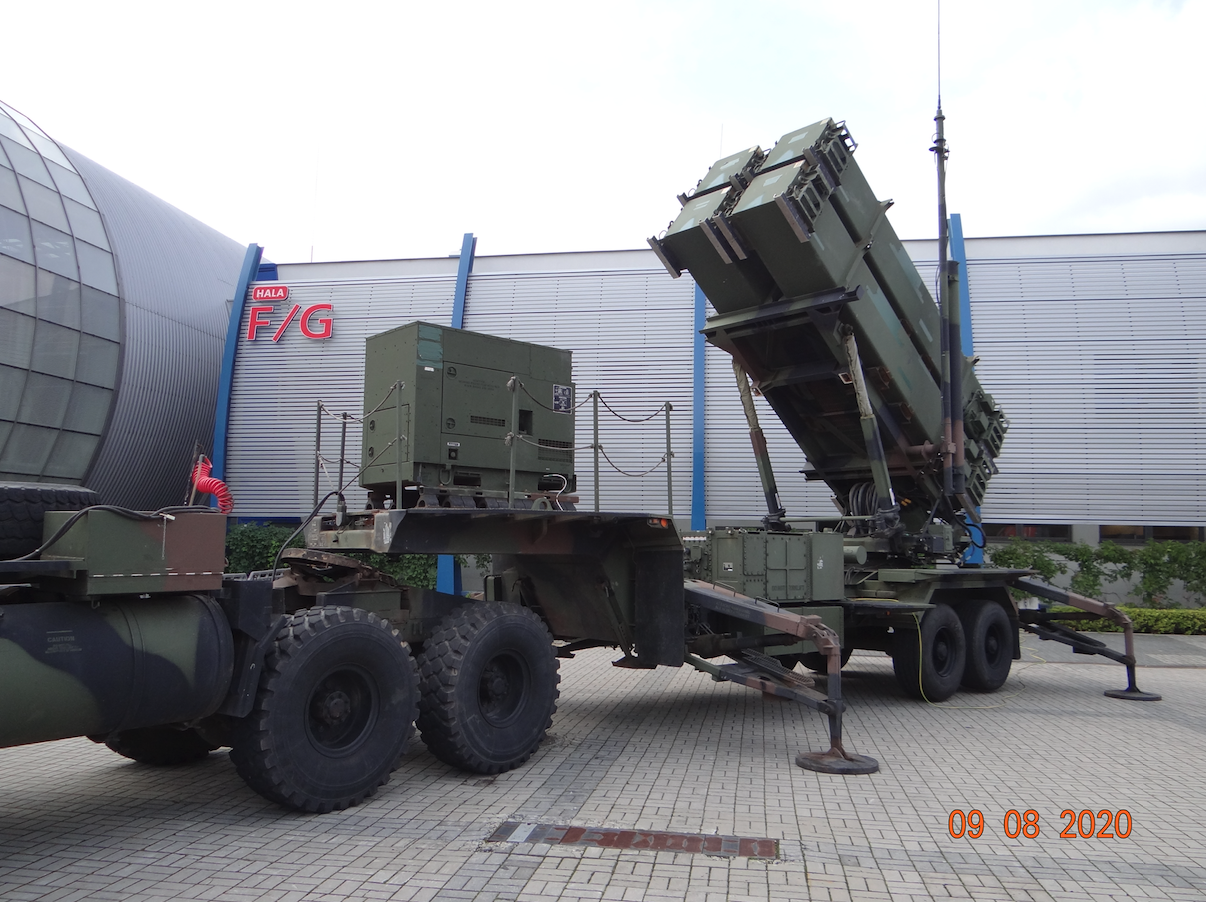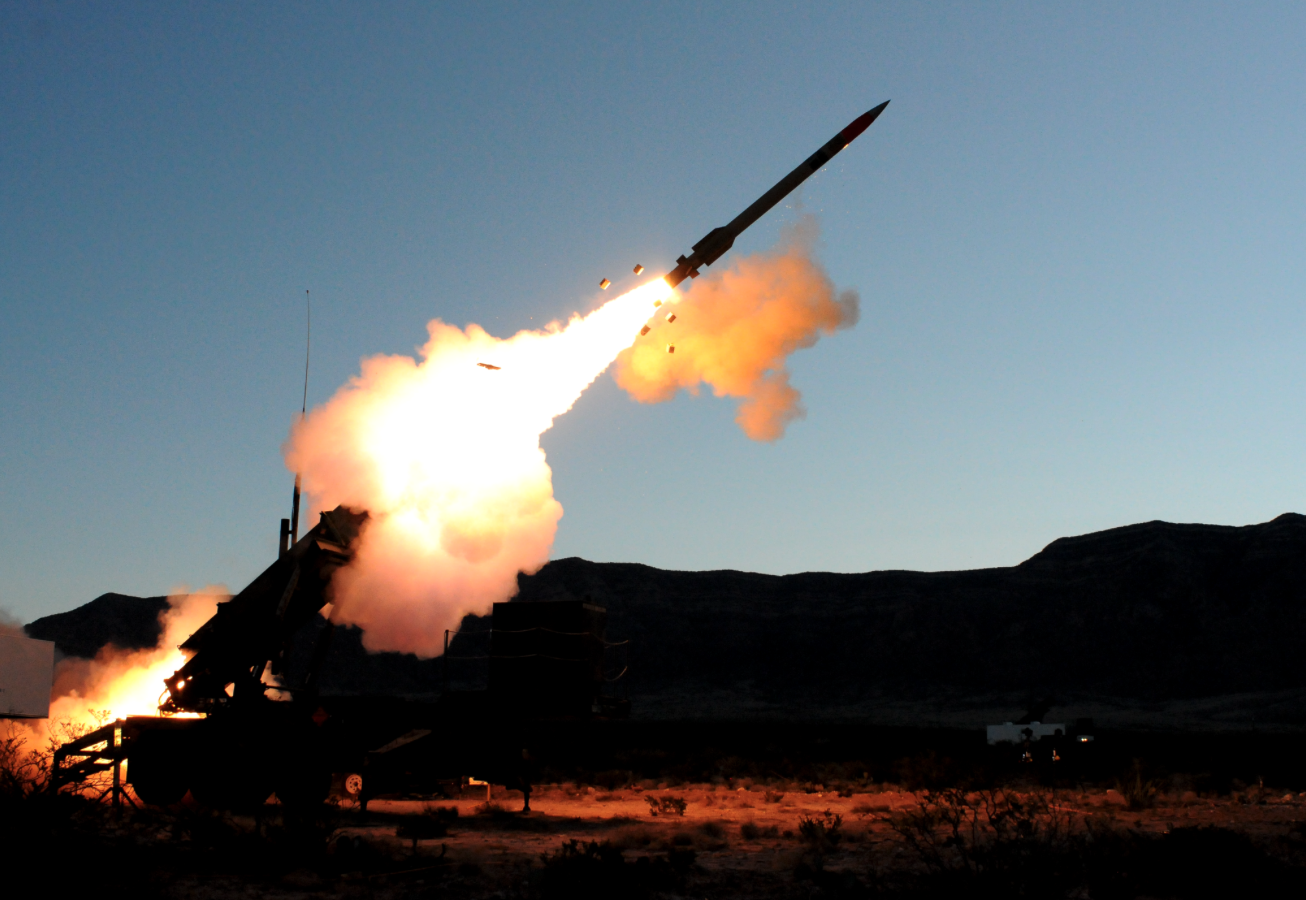Kraków 2019-06-14
System Patriot dla Polski.
Proces wymiany postsowieckiego sprzętu wojskowego w Polsce przebiega z dużymi oporami i jest bardzo rozciągnięty w czasie. Dopiero w ostatnich latach podjęto kilka istotnych decyzji i zawarto kontrakty. Jednym z najważniejszych jest kontrakt na pozyskanie systemu MIM-104 Patriot.
System MIM-104 Patriot to amerykański rakietowy system ziemia-powietrze na mobilnej platformie samochodowej. MIM-104 został opracowany, jako system ochrony przeciwlotniczej i przeciwrakietowej wrogiego ataku, na średnich dystansach. System przeznaczony jest do zwalczania załogowych i bezzałogowych statków powietrznych, w tym samolotów i śmigłowców, a także pocisków rakietowych (na odpowiednim pułapie). Mobilność systemu zapewnia transport zarówno drogowy, jak powietrzny.
Prace nad systemem rozpoczęto w USA w 1961 roku. W maju 1967 roku firma Raytheon została wybrana kierującą rozwojem projektu, który wówczas oznaczonego SAM-D. Pierwsze testy odpalenia pocisków rozpoczęły się w listopadzie 1969 roku. W 1974 roku nastąpiła istotna zmiana, co do sposobu naprowadzania pocisku, który teraz powinien sam się naprowadzać na cel, a nie na podstawie danych dostarczonych przez naziemny radar. Było to wynikiem postępów w elektronice oraz wprowadzenia nowych pocisków klasy powietrze-powietrze. Ta sytuacja spowodowała wydłużenie prac rozwojowych nad systemem.
Pod koniec 70-lat system oznaczono MIM-104A Patriot. Pierwszy kontrakt dla US Army zawarto w 1980 roku. Pierwsze zestawy trafiły do oddziałów wojskowych w 1984 roku. Ostatecznie, system MIM-104 Patriot zastąpił systemy MIM-14 Nike-Hercules oraz MIM-23 Hawk.
Ogólnie system MIM-104A Patriot składa się ze stanowiska dowodzenia AN/MSQ-104, radaru matrycowo-fazowanego AN/MPQ-53 i wyrzutni M-901 rakiet Patriot. W rzeczywistości system jest bardzo rozbudowany. Może pracować automatycznie lub komendowo, po wypracowaniu danych. Jeden zestaw śledzi do 120 celów i może naprowadzić na nie jednocześnie 9 pocisków rakietowych. Poszczególne moduły systemu są ze sobą połączone kablem, światłowodem lub radiowo. System działa automatycznie i niezwykle szybko. Od momentu wykrycia przez radar lecącego celu do momentu wystrzelenia rakiety mija mniej niż 10 sekund. W zależności od konfiguracji, jeden system może składać się od 4 do 8 pojazdów transportowych.
Pocisk PAC-3 podąża do celu początkowo na podstawie wstępnych danych uzyskanych z radaru, a następnie sam przechwytuje cel. Na pokładzie pocisku jest radiolokator, przez co naprowadzanie jest radiolokacyjnie. Pocisk cały czas utrzymuje łączność ze stanowiskiem dowodzenia, przekazując dane do systemu komputerowego. Zasięg pocisku wynosi 3 – 160 km. Pułap rażenia do 25 000 m. Głowica bojowa jest o masie 90 kg.
System Patriot miał swój chrzest bojowy w 1990 roku, w czasie Pustynnej Burzy, czyli I wojny w Zatoce Perskiej. Choć nie obyło się bez „chorób wieku dziecięcego”, to jednak z 53 rakiet wystrzelonych przez Saddama Husajna zestrzelonych zostało aż 51.
Do obecnych czasów, w produkcji jest już piąta generacja systemów Patriot. System Patriot wszedł na uzbrojenie USA, Holandia, Japonia, Niemcy, Izrael, Arabia Saudyjska, Kuwejt, Tajwan, Grecja, Hiszpania, ZEA.
Patriot dla Polski
Wiemy, że administracja USA zezwoliła na zakup baterii w takiej konfiguracji, jakiej używa amerykańskie wojsko. Po czym zgodzono się na sprzedaż jeszcze nowszej wersji, z systemem IBCS, którego jeszcze wojska amerykańskie nie mają. To oznacza najnowszą możliwą wersję.
Rozmowy w sprawie zakupu Patriot rozpoczął poprzedni rząd PO-PSL (Platforma Obywatelska – Polskie Stronnictwo Ludowe).
Polski system Patriot miały być uzbrojony w 4 rakiety PAC-3 i 3 rakiety PAC-2. Rakieta PAC-3 ważą około 300 kilogramów, ale już waga rakiet PAC-2, przeznaczonych do unieszkodliwiania rakiet i samolotów, to około 900 kilogramów. W trakcie negocjacji strona Polska zrezygnowała z rakiet PAC-2, a wykazała zainteresowanie nowszymi rakietami.
Kilka lat temu eksperci twierdzili, że taki kraj jak Polska, potrzebuje około 10 baterii rakiet, po to by pokryć nimi całą powierzchnię. Z najnowszych informacji wynika, że będziemy potrzebować 8 baterii.
W trakcie ostatecznych negocjacji nastąpiły istotne zmiany w wymaganiach ze strony Polskiej. System Patriot jest częścią programu „Wisła” i będzie jednym z głównych elementów tworzących system Obrony Powietrznej Kraju.
Umowa została zawarta w marcu 2018 roku, między Rządem Polskim, a Departamentem Obrony USA. Jest to tak zwane porozumienie między-rządowe LOA, podpisane w trybie FMS. I to Departament Obrony USA zawarł kolejną umowę z koncernem Raytheon, który buduje te zestawy. Prace będą realizowane w Andover w stanie Massachusetts, na poligonie White Sands w stanie Nowy Meksyk oraz w Merrimack w stanie New Hampshire. Prace będą trwały do 31 grudnia 2022 roku. Kolejna umowa została zawarta z firmą Lockheed Martin, która produkuje rakiety PAC-3 MSE. Komponenty systemu IBCS produkuje firma Northrop Grumman. Łącznie zostało zawartych 10 umów, w tym krajowe.
Dzięki zawartemu kontraktowi do Polski trafią także nowoczesne technologie, na podstawie wynegocjowanego offsetu i podpisanych umów między spółkami Polskiej Grupy Zbrojeniowej a Lockheed Martin, o wartości 724 764 000 zł. Wspomniane umowy dotyczą przede wszystkim pozyskania zdolności do produkcji wybranych elementów pocisków PAC-3 MSE, produkcji i serwisowania elementów ich wyrzutni.
Polska wybrała zakup dwóch baterii Patriot w konfiguracji 3+ z systemem IBCS. Polska za system Patriot razem z systemem zarządzania polem walki zapłaci 4 miliardy 750 milionów dolarów i będzie drugim krajem na świecie po Stanach Zjednoczonych z najnowocześniejszymi zestawami Patriot z systemem IBCS.
Dostawa obu baterii systemu IBCS/PATRIOT planowana jest do końca 2022 roku, a osiągnięcie wstępnej gotowości operacyjnej (Initial Operational Capability – IOC) planowane jest na przełomie 2023 i 2024 roku.
System IBCS to łączący elementy systemu Patriot i wprowadza jakościowy skok. Dzięki niemu system staje się rozproszony. Nie ma, w odróżnieniu od klasycznego Patriota, centralnego mózgu, którego wyeliminowanie powoduje unieszkodliwienie całego systemu. Dzięki zakupowi w pełni funkcjonalnych stanowisk ECS polski Patriot będzie mógł również działać w sposób klasyczny, będąc całkowicie odpornym na ewentualne problemy z działaniem sieci IFCN i systemu IBCS. Systemu IBCS działa na fundamencie sieci IFCN. Pozwala on na to, że system nie ma jednego mózgu, a te które są, nawzajem się wspierają. W klasycznym systemie Patriot likwidacja mózgu czyni baterie niezdolną do działania. IBCS wprowadza tu nową jakoś w tym zakresie, że informacja „z sieci” jest wystarczająca by naprowadzić pocisk na wrogi cel. W dodatku do systemu IBCS można podpinać kolejne elementy systemu obronnego Polski i sojuszników. Nawet te, które dopiero będą wprowadzone.
Najbardziej podstawową różnicą między Polską baterią Patriot z IBCS a klasyczną baterią Patriot jest fakt, iż Polska bateria jest większa i można ją traktować w przybliżeniu, jako odpowiednik dwóch baterii. Polska bateria dysponuje dwoma radarami AN/MPQ-65, klasyczna jednym. Polska bateria dysponuje 8 wyrzutniami i obsługuje do 96 pocisków. Klasyczna bateria ma 6 wyrzutni z 40-48 pociskami.
Obecność dwóch radarów w baterii umożliwia nie tylko stworzenie dwóch niezależnych elementów ogniowych wewnątrz baterii, ale również zapewnienie ciągłości działania baterii i co za tym idzie ciągłości w zabezpieczaniu ochranianego obiektu.
W drugiej fazie programu Wisła mogą być wprowadzone nowe pociski rakietowe. Wprowadzony ma być system pasywnego wykrywania celów PET/PCL. W drugiej fazie planowane jest odejście od amerykańskich sieci IFCN i zastąpienie ich krajowymi rozwiązaniami MCC. Docelowo system IBCS będzie działał w oparciu o polskie środki łączności. Generalnie system ma się rozwijać w kierunku polonizacji poszczególnych komponentów.
Elementy takie jak radar, moduł zasilania radaru oraz wyrzutnie zostaną dostarczone z USA do Polski w konfiguracji na naczepach i przyczepach. Zakłady Jelcz mają opracować odpowiednie do ich holowania ciągniki siodłowe. Dostosowanie ciągników obejmować ma między innymi pasujące siodło oraz kompatybilne instalacje: elektryczną i pneumatyczną. Będzie to pojazd zewnętrznie podobny do ciągnika mostu MS-20 Daglezja. Polska strona nie zdecydowała się na montaż elementów bezpośrednio na pojazdach, jak to uczynili inni odbiorcy. Chciano zminimalizować koszty oraz ograniczyć ryzyko problemów z obcymi samochodami. Maszty antenowe do komunikacji z siecią IFCN zostaną dostarczone na przyczepach jednoosiowych. Za ich holowniki będą służyć samochody Jelcz 4×4. Stanowiska robocze zostaną osadzone w kontenerze przewożonym przez ciężarówkę Jelcz.
Za 2 baterie zapłacimy 4,75 mld dolarów (16 mld zł.). Cena nie jest szokująca. Kupiliśmy zestawy z IBCS, a warto za to zapłacić. Trzeba mieć świadomość, że kupujemy coś, co dopiero wchodzi na wyposażenie armii USA. W skład dwóch baterii Patriot (cztery jednostki ogniowe) wejdzie 16 wyrzutni M903, cztery radary i cztery stanowiska dowodzenia. W pierwszej fazie MON kupuje 208 rakiet PAC-3 MSE (każda za około 5-6 mln dol.) . IBCS to między innymi 6 stacji Engagement Operations Center oraz 12 radiolinii IFCN. Pierwsze rakiety systemu Patriot trafią do Polski w 2022 roku.
Umowa offsetowa jest o wartości około 1 mld dolarów i będzie obowiązywała przez 10 lat. Polskie firmy mają brać udział w produkcji i serwisowaniu elementów wyrzutni przeznaczonych dla pocisków PAC-3 MSE. Polacy będą też wytwarzać wybrane elementy tych pocisków i już to czynią. Umowa przewiduje również budowę laboratorium dla badań tych rakiet, a także zdolności związanych z utrzymaniem samolotów Lockheed Martin F-16 Jastrząb.
Oczywiście, opozycja rządowa nie zostawia na podpisanej umowie suchej nitki. Czepiają się, że transfer technologii będzie na poziomie 950 mln zł, a będzie to 700 mln zł, które trafią do Polskiego Przemysłu. Offset jest na poziomie 20 %, podczas gdy początkowo miało być 50 %. Warto jednak pamiętać, że w 2017 roku amerykanie sygnalizowali, że cena maksymalna może wynieść 10 mld dolarów, czyli o ponad połowę udało się zbić cenę.
Prawdą jest, że otrzymamy radary kierunkowe (180 stopni), a nie dookolne 360 stopni. Radary dookolne będą dopiero w kolejnym etapie programu „Wisła”.
Opozycja twierdzi, że przez rok MON zapewniało Polaków, że 30 mld zł powinno wystarczyć na zakup 8 baterii systemu Patriot. Teraz kupimy dwie za 16 mld zł. Tego typu stwierdzenie jest po prostu kłamstwem. Polska kupuje dwie baterie, ale równoważne czterem bateriom Patriot klasycznym i to bez systemu IBCS. Dlatego cena jest porównywalna.
Pamiętajmy też, że poprzednie Polskie Rządy niewiele zrobiłyby przyśpieszyć cały proces wyboru takiego systemu. Tym bardziej, że żaden inny kraj nie oferuje lepszego systemu obrony przeciwlotniczej.
Opracował Karol Placha Hetman


